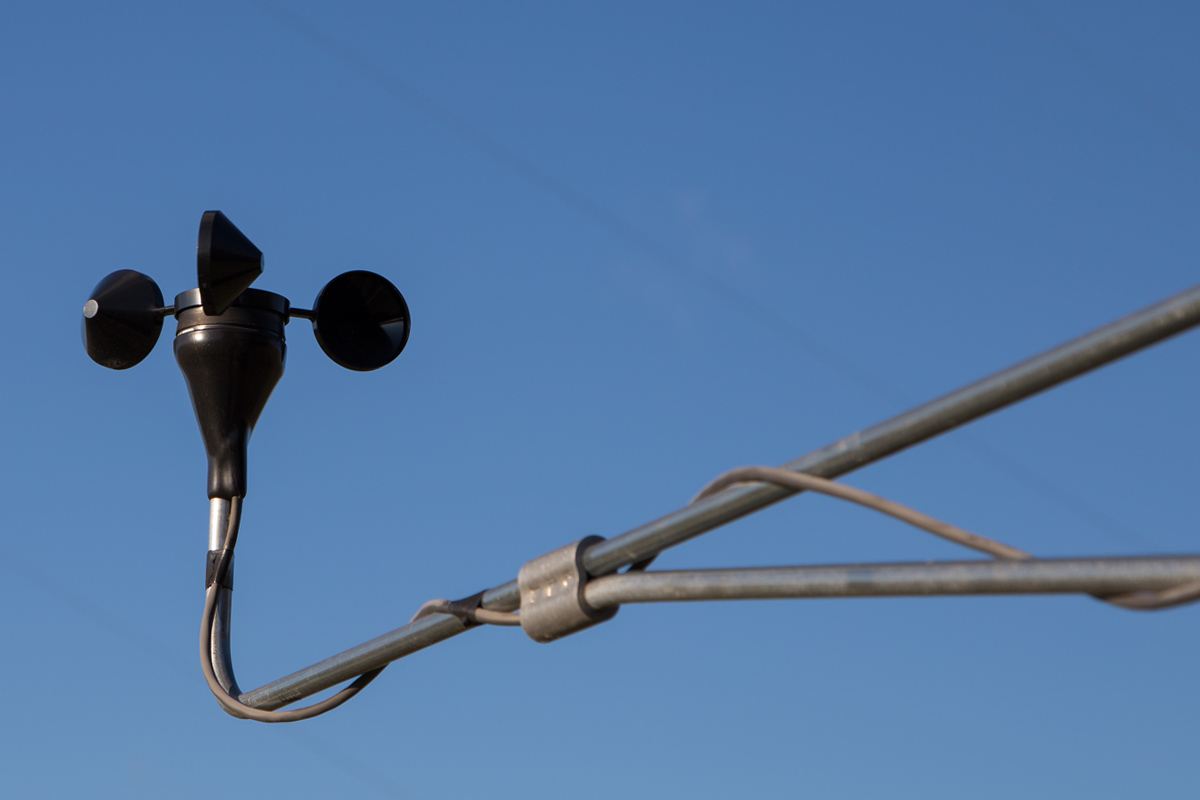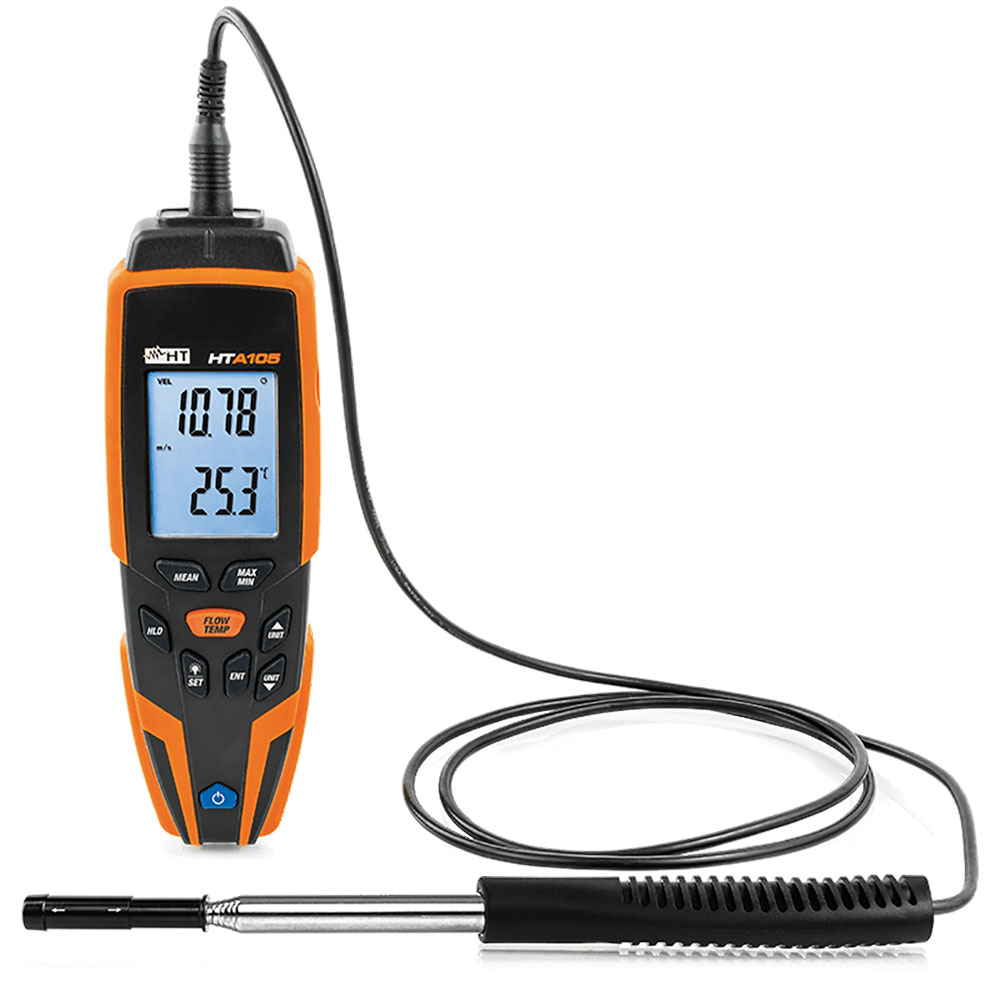Choosing the Right Anemometer: A Comprehensive Buying Guide
Wiki Article
Anemometers Unveiled: Recognizing Their Value in Ecological Surveillance and Precaution
The function of anemometers in environmental tracking and safety procedures is typically underestimated, yet their value is indisputable. From meteorology to aeronautics safety, anemometers play a critical function in giving precise information that informs decision-making procedures and enhances general safety and security.History of Anemometers
The advancement of anemometers can be traced back to the old civilizations where primary wind measuring gadgets were very first made use of. One of the earliest known anemometers was the hemispherical cup anemometer created by Leon Battista Alberti in the 15th century.Over the years, improvements in innovation led to the advancement of even more modern-day anemometers, consisting of ultrasonic anemometers and laser Doppler anemometers, providing enhanced precision and performance in gauging wind rate and direction. The background of anemometers showcases an impressive trip of advancement and development in the field of weather forecasting.
Kinds of Anemometers
Throughout the area of meteorology, various kinds of anemometers have been created to precisely gauge wind speed and instructions. One of the most typical type is the cup anemometer, which contains three or 4 mugs mounted on straight arms that turn with the wind. As the cups rotate, the speed at which they rotate is straight proportional to the wind rate. One more widely made use of type is the vane anemometer, which includes a tail or fin that aligns itself with the wind instructions. This positioning allows the tool to figure out the wind direction. Sonic anemometers utilize ultrasonic signals to measure wind rate and direction properly. They are typically made use of in research study applications due to their high accuracy. Hot-wire anemometers run based upon the principle that the cooling result of wind on a heated cable is proportional to the wind speed. These anemometers appropriate for determining reduced wind speeds with high precision. Each sort of anemometer has its toughness and is chosen based upon the specific demands of the monitoring task handy.Applications in Meteorology
Having actually gone over the different kinds of anemometers utilized in meteorology for measuring wind speed and instructions, it is important to discover their useful applications in the field. Anemometers play a crucial role in meteorology by offering accurate and real-time data on wind conditions (anemometer). Meteorologists use anemometers to keep track of wind speed and direction to forecast weather patterns, issue warnings for severe weather occasions like tornadoes, storms, and hurricanes, and analyze climatic problems for air travel safetyIn weather forecasting, anemometers aid in recognizing local and neighborhood wind patterns, which are crucial for anticipating weather adjustments and establishing weather trends. These devices are additionally utilized in research to research microclimates, metropolitan heat islands, and air contamination dispersion. Additionally, anemometers are used in agriculture to optimize plant management techniques, such as watering and pesticide application, based upon wind conditions.
Relevance in Air Travel Security
An indispensable element of ensuring air travel safety hinges on the meticulous surveillance of wind problems making use of anemometers. Anemometers play a crucial duty in aviation by supplying real-time data on wind speed and instructions, helping pilots in making educated choices throughout flight, touchdown, and liftoff. Strong and uncertain winds can considerably influence aircraft operations, making it essential for air travel authorities to rely upon accurate wind dimensions to ensure the safety of travelers and staff.
In the dynamic atmosphere of aeronautics, where even small changes in wind rate and direction can have profound results, anemometers stand as essential devices for promoting safe and protected flight.
Duty in Environmental Study
Anemometers play an essential role in environmental study by giving essential data on wind speed and direction. By accurately measuring wind characteristics, anemometers help scientists assess the activity of toxins in the air, analyze the influence of commercial discharges, and anticipate the spread of pollutants in the atmosphere.

Verdict
Finally, anemometers have played an essential role in ecological surveillance and precaution. With a rich background and numerous kinds offered, these gadgets have been widely made use of in weather forecasting, air travel security, and environmental research. Recognizing the relevance of anemometers is necessary for precisely determining wind speed and instructions, which is crucial for anticipating weather condition patterns, making sure risk-free aviation procedures, and carrying out environmental researches - anemometer. Their contributions to these fields can not be taken too lightly.One of the earliest well-known anemometers was the hemispherical cup anemometer designed by Leon Battista Alberti in the 15th century. Over the years, developments in modern technology led to the advancement of even more modern anemometers, consisting of ultrasonic anemometers and laser Doppler anemometers, offering boosted precision and effectiveness in gauging wind speed and direction. Hot-wire anemometers run based on the principle that the cooling impact of wind on a warmed wire is proportional to the wind rate. Meteorologists use anemometers to keep an my sources eye on wind rate and direction to forecast weather condition patterns, issue warnings for news serious climate events like typhoons, tornados, and hurricanes, and assess atmospheric problems for aeronautics safety and security.
Understanding the importance of anemometers is crucial for accurately measuring wind speed and direction, which is important for anticipating weather condition patterns, making certain safe aviation operations, and conducting environmental studies. (anemometer)
Report this wiki page